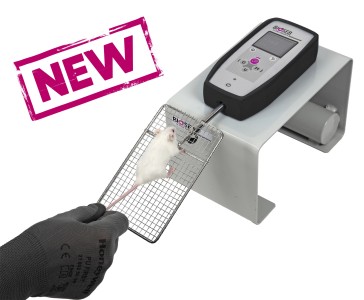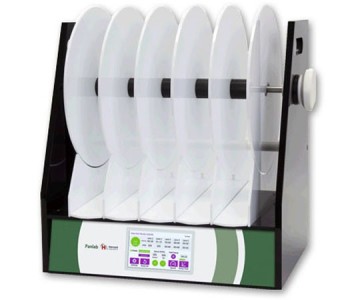Authors
A. Zimprich, M.A. Östereicher, L. Becker, P. Dirscherl, L. Ernst, H. Fuchs, V. Gailus-Durner, L, Garrett, F. Giesert, L. Glasl, A. Hummel, J. Rozman, M. Hrabeˇ de Angelis, D. Vogt-Weisenhorn, W. Wurst, S.M. Hölterb,
Lab
Institute of Developmental Genetics, Helmholtz Zentrum München, Neuherberg, Germany
Journal
Journal of Neuroscience Methods
Abstract
Background: Generation and phenotyping of mutant mouse models continues to increase along with the search for the most efficient phenotyping tests. Here we asked if a combination of different locomotor tests is necessary for comprehensive locomotor phenotyping, or if a large data set from an automated gait analysis with the CatWalk system would suffice.
New method: First we endeavored to meaningfully reduce the large CatWalk data set by Principal Com-ponent Analysis (PCA) to decide on the most relevant parameters. We analyzed the influence of sex, body weight, genetic background and age. Then a combination of different locomotor tests was analyzed to investigate the possibility of redundancy between tests.
Result: The extracted 10 components describe 80% of the total variance in the CatWalk, characterizing different aspects of gait. With these, effects of CatWalk version, sex, body weight, age and genetic back-ground were detected. In addition, the PCA on a combination of locomotor tests suggests that these are independent without significant redundancy in their locomotor measures.
Comparison with existing methods: The PCA has permitted the refinement of the highly dimensional Cat- Walk (and other tests) data set for the extraction of individual component scores and subsequent analysis.
BIOSEB Instruments Used
Aron Test or Four Plates Test (LE830),Grip strength test (BIO-GS3),Rotarod (BX-ROD)
Source :
http://www.sciencedirect.com/science/article/pii/S0165027017301243?via%3Dihub

 Pain - Thermal Allodynia / Hyperalgesia
Pain - Thermal Allodynia / Hyperalgesia Pain - Spontaneous Pain - Postural Deficit
Pain - Spontaneous Pain - Postural Deficit Pain - Mechanical Allodynia / Hyperalgesia
Pain - Mechanical Allodynia / Hyperalgesia Learning/Memory - Attention - Addiction
Learning/Memory - Attention - Addiction Physiology & Respiratory Research
Physiology & Respiratory Research











![Dynamic Weight Bearing 2.0 – Postural Module [Add-on]](https://bioseb.com/733-home_default/dynamic-weight-bearing-20-add-on-postural-module.jpg)
























 Pain
Pain Central Nervous System (CNS)
Central Nervous System (CNS) Neurodegeneration
Neurodegeneration Sensory system
Sensory system Motor control
Motor control Mood Disorders
Mood Disorders Other disorders
Other disorders Muscular system
Muscular system Joints
Joints Metabolism
Metabolism Cross-disciplinary subjects
Cross-disciplinary subjects CONFERENCES & MEETINGS
CONFERENCES & MEETINGS 
